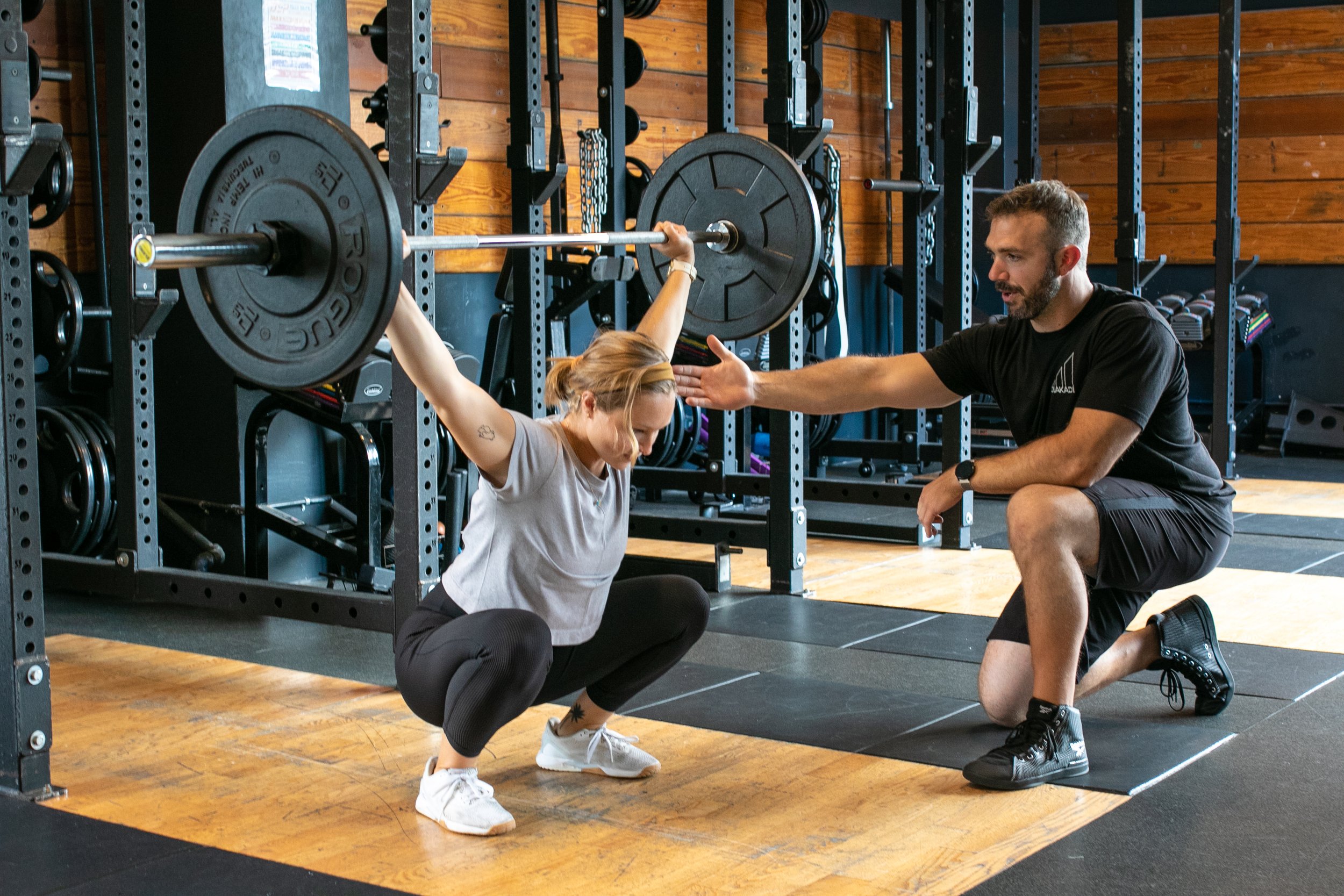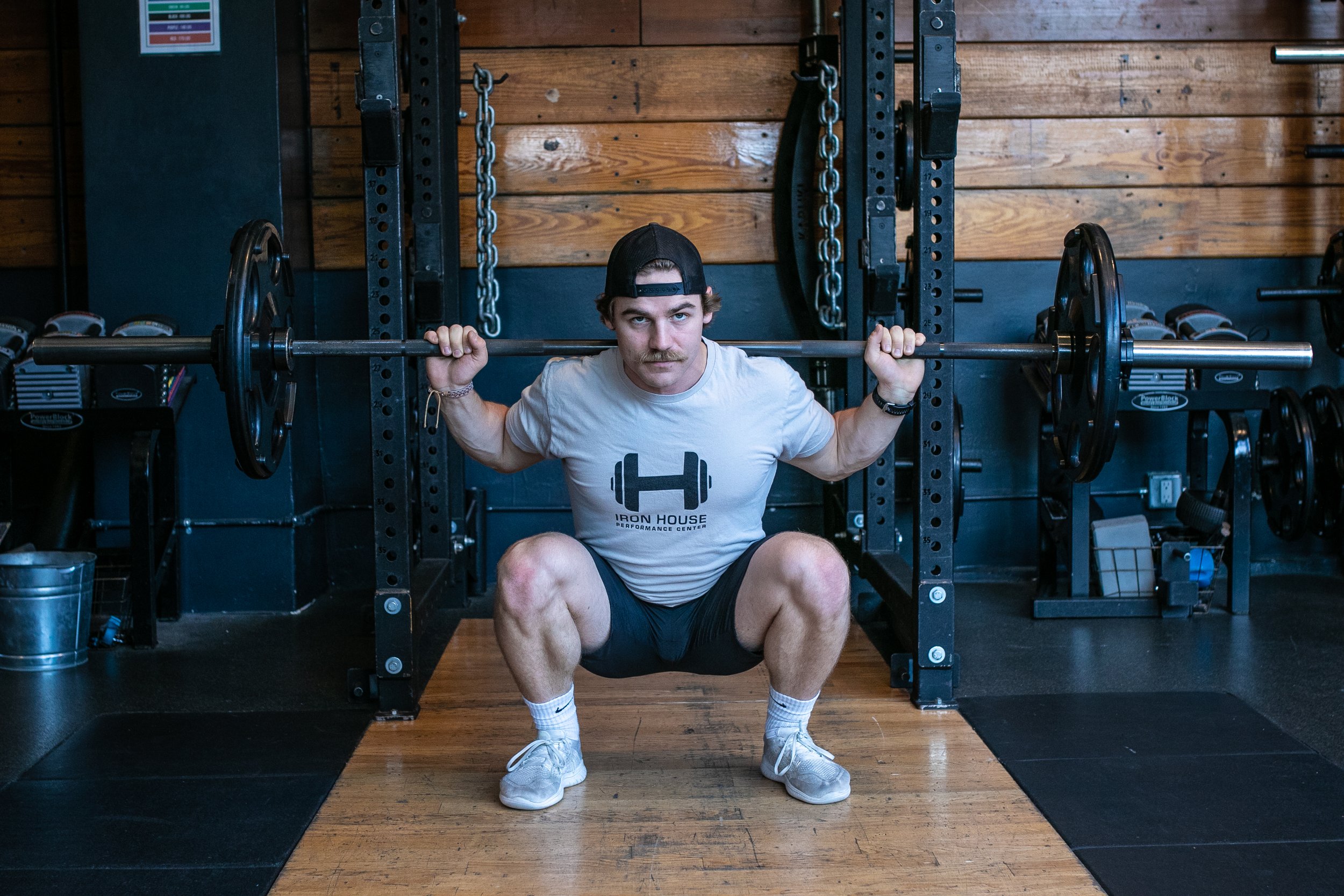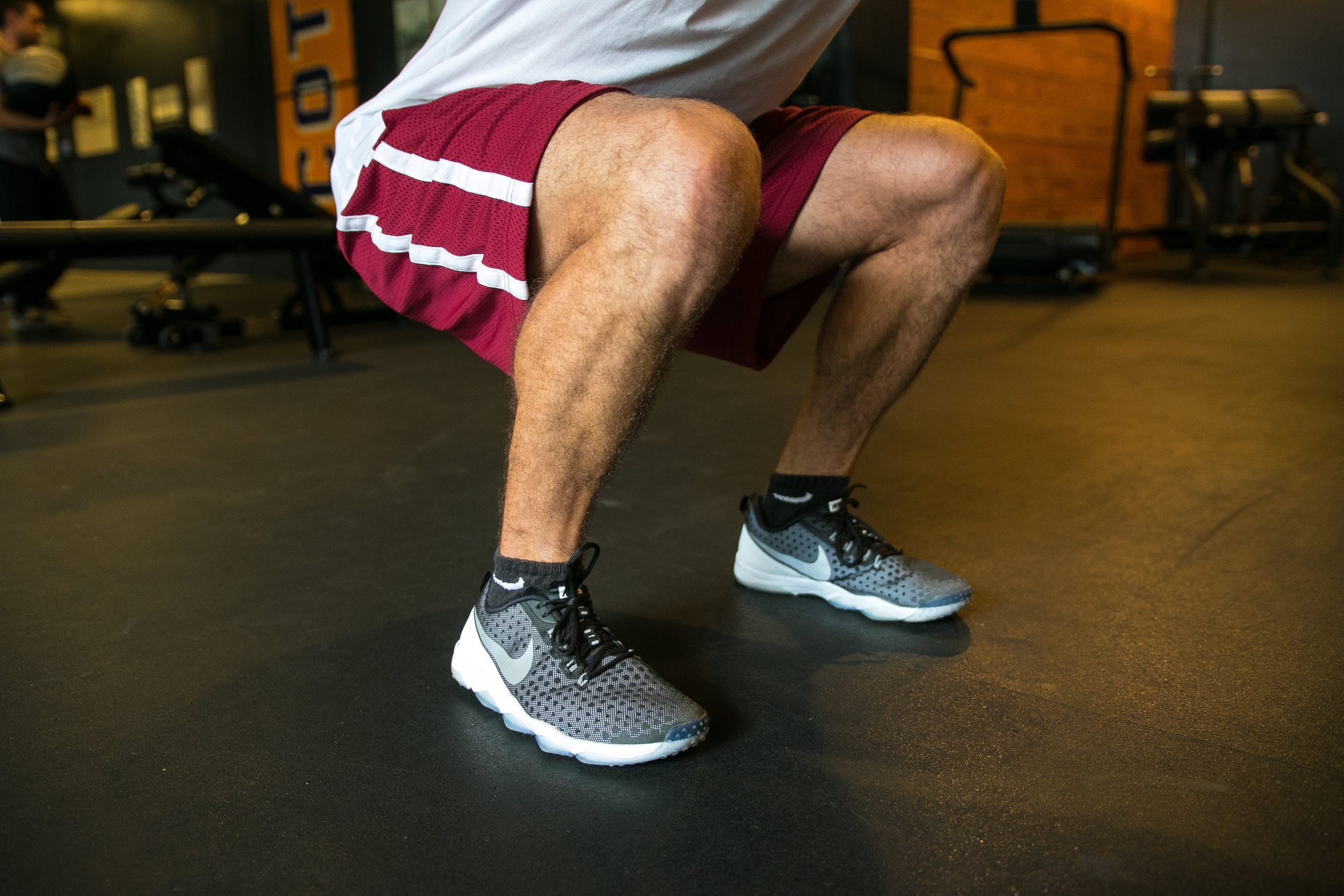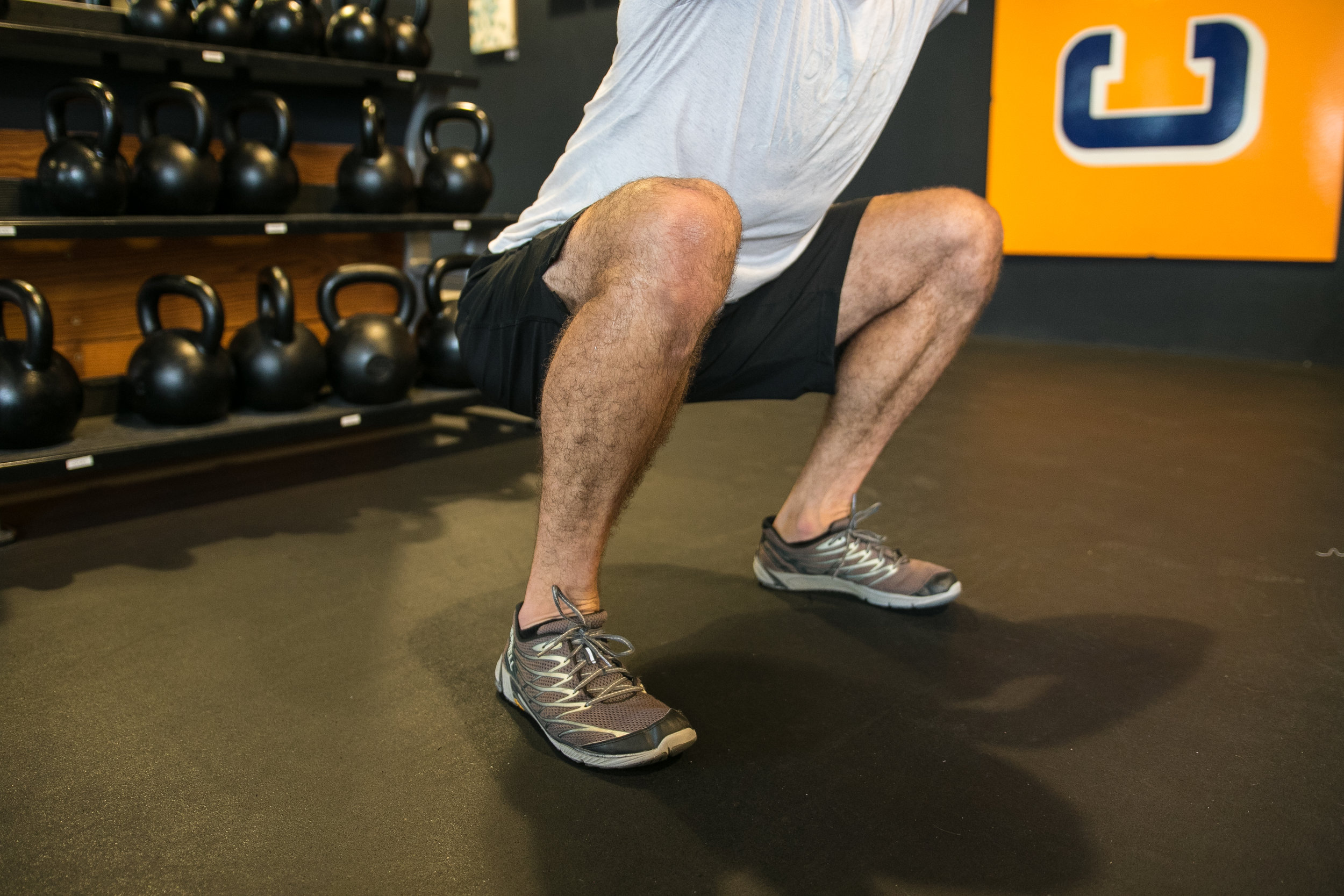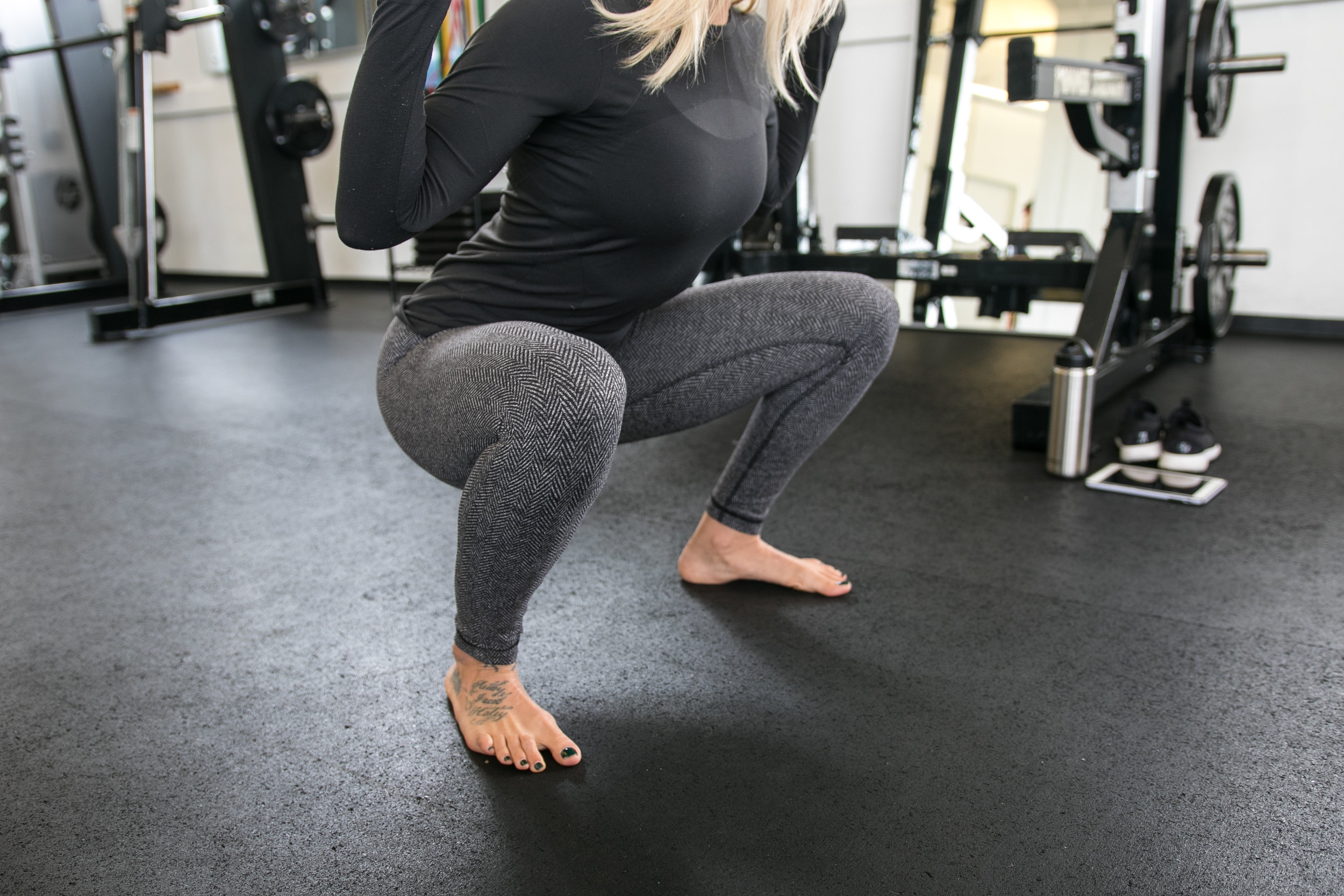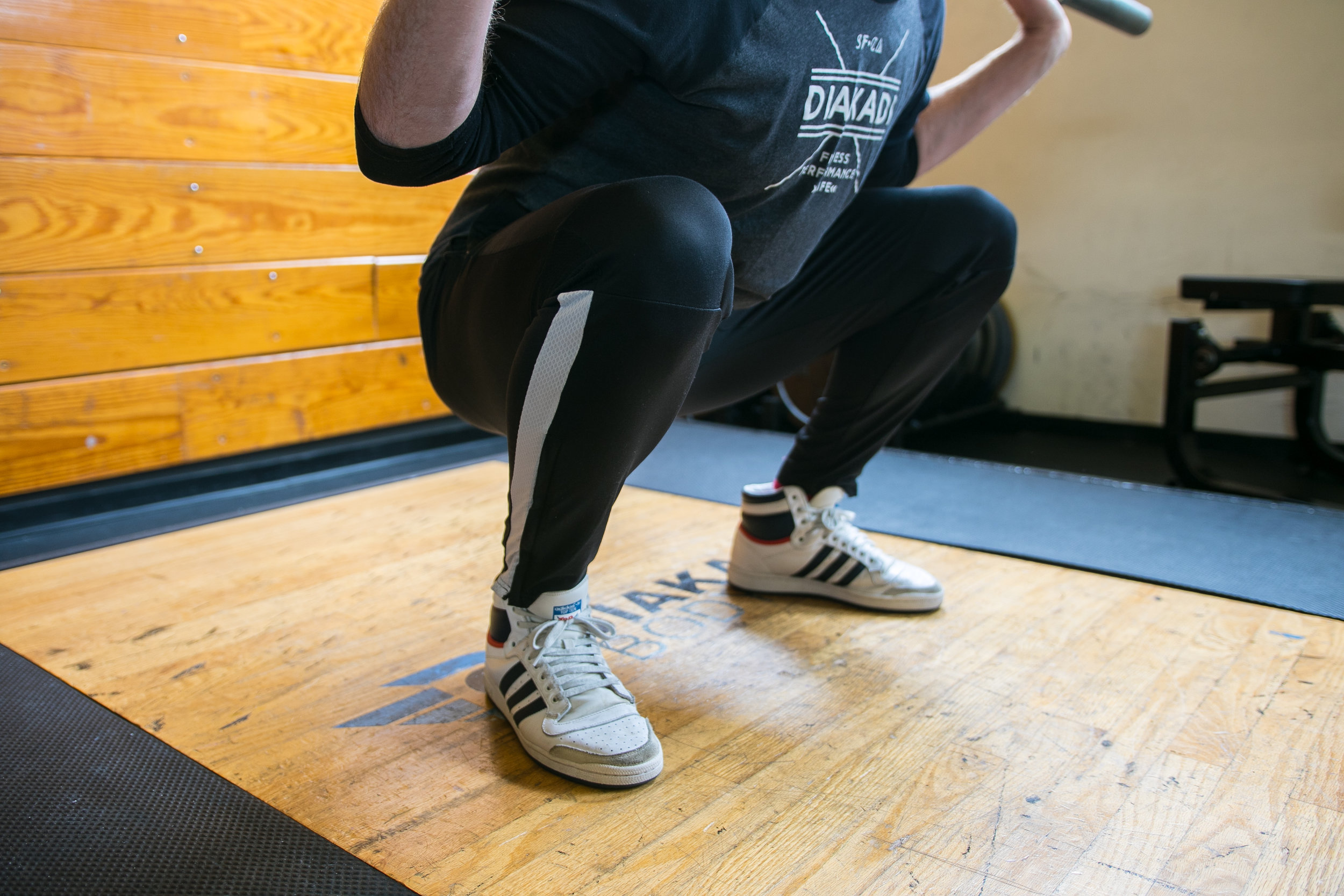As fitness professionals, we have been squatting for a long time. We learned to squat with “proper” form, and that form was reinforced by certifying organizations like NASM, NSCA, and CHEK. As part of the certification process, we’ve been trained on not only how to squat properly, but how to evaluate other people’s squats. And you know what? Other people have different squatting forms—particularly with respect to their foot position—depending on the form their trainers or coaches or health gurus favored. As a fundamental building block of fitness, you might think there was consensus as to how a squat ought to be done. But, if you scratch the surface, you’ll find that the fitness industry has its very own “Cola Wars”, and depending on their background, trainers can be just as passionate about the correct foot position for a squat as any child of the ‘80s was about Coke vs. Pepsi.
DIAKADI trainers Aurora Bellone and Brandon Lienhop.
Some lifters position their feet straight ahead and others use some degree of external rotation (outward turn) for foot position. How does foot position effect the mechanics of the squat? In other words, should I squat with my feet straight ahead or should they be rotated out? If you ask a panel of kinesiologists, physical therapists, and biomechanists—professionals who are best qualified to opine on form—you’ll find that even within disciplines there’s not a clear favorite.
Since we at DIAKADI really wanted to get the bottom of what foot position our clients should be using while squatting, we took a deep dive into what some of the leading professionals in the fitness community had to say about the matter. Read on to see the results of our very own spin on the “Pepsi Challenge” and learn which foot position is preferred by prominent members of the Power Lifting, Body Building, Olympic Lifting, Strength Coach, and Crossfit communities, as well as the recommendations of leading certification authorities: ACSM, NSCA, NASM, and CHEK.
DIAKADI trainer, Kyle Reinstadtler.
Power Lifters:
Mark Rippetoe, the author of Starting Strength: Basic Barbell Training—the seminal work on raw power lifting—advocates a low-bar squat with the toes pointed out at approximately a 30 degree angle. Note that a low-bar squat requires a smaller hip angle and larger forward lean than the conventional high-bar squat that most people are familiar with. To see Mr. Rippetoe’s squat in action, check out the following video.
Body Builders:
Natural Body Builder and Physique coach Dr. Layne Norton believes that, regardless of whether you use a low-bar or high-bar position when you squat, the best way to find your proper foot placement is to get into your squat stance and squeeze your glutes; that should move your toes where they should be for each individual. Dr. Norton and BodyBuilding.com created an excellent video on squatting, where you can see this recommendation in action.
Crossfit Community:
In May 2011, physical therapist, movement & mobility coach, and former San Francisco CrossFit owner Kelly Starrett highlighted foot placement for the squat on his vlog. Based on materials on his site, Starrett appears to argue that the ideal foot placement for the squat is 5 to 12 degree external rotation. He prefers this foot position because he feels that it is a more stable athletic position than feet positioned at 15 degrees and greater—as shown in this video—which protects the lower joints from injury during athletic endeavors. In addition, Starrett believes that when you squat with your toes rotated beyond 15 degrees “you’re training your brain, nervous system, and musculature to be in that position,” which is especially problematic when an athlete jumps and lands with his or her feet turned out because this can lead to knee problems like ACL or MCL strains or tears. However, Starrett does note that the benefits of externally rotated feet sometimes outweigh the risks for certain individuals. For example, power lifters looking to build more muscle and lift more weight may want to turn their feet out passed 15 degrees.
Olympic Lifters:
Greg Everett, the author of Olympic Weightlifting: A Complete Guide for Athletes & Coaches and the owner of Catalyst Athletics in Sunnyvalle, CA, states that a weight lifer’s foot position during the squat should mirror the angle that the thighs are exiting the hip—which varies depending on the anatomy of the individual— so that the knee hinges without twisting. In fact, Everett wrote an article in response to Kelly Starrett’s view on squat foot position where he asserts that “gym training does not and cannot perfectly mimic play on the field” and that “sports-specific motor patterns are learned, developed and practiced with sport-specific training on the field” not in the gym.
Strength Coaches:
When looking for an informed opinion on squat foot position from a renowned strength coach, I went straight to Eric Cressey. He is the author of multiple sports performance books and owner/operator of Cressey Sports Performance in Hudson, MA and Jupiter, FL where he and his team train over 100 professional baseball players and countless youth athletes each year. When it comes to training his athletes to squat, Cressey advocates a foot position at 15 to 30 degrees of external rotation, which is directly counter to what Kelly Starrett recommends for athletes.
Fitness Certification Authorities:
Beyond this range of individual expert opinions on foot placement for the squat, we looked at the positions of the certification authorities that train personal trainers and strength coaches. Here are some of our favorites.
ACSM – The ACSM Current Comment on the Safety of the Squat Exercise, although very thorough, does not mention foot position regarding rotation.
CHEK Institute – The CHEK Institute recommends that toes should be turned out up to 30 degrees.
NASM – Contrary to what NASM says for the overhead squat assessment, which tests individuals for overall muscle imbalances, the October 23, 2014 NASM newsletter states regarding squat stance that outward rotation of the feet during the squat is generally acceptable so long as the rotation occurs at the hip joints and not the knees. In addition the newsletter states that 15-30 degrees of external rotation of the feet provide for greater engagement of the adductors and is believed to increase the power of the squat, but that position should not compromise good form, i.e. the knees should not cave in and the knees should maintain alignment over the 2nd toe of each foot. Further, the newsletter states that external rotation of the feet beyond 30 to 40 degrees may alter hip position and may cause a loss of stability.
NSCA – In its well documented paper, “The Back Squat: A Proposed Assessment of Functional Deficits and Technical Factors That Limit Performance”, the NSCA states that “moderate variations” of foot placement during the squat may be acceptable so long as athletes do not internally rotate feet (toes pointed in) past 30 degrees and do not externally rotate feet (toes pointed out) past 80 degrees since such foot positions may compromise balance and knee tracking.
DIAKADI Trainer Natasha Gosiaco coaching her client on proper squat form.
We’ve tallied it all up in the table below:
|
Expert/Organization |
Community |
Foot Placement Advocated |
Notes
|
|
Mark Rippetoe |
Power Lifting |
~30° external rotation |
Use a low bar position |
|
Layne Norton |
Body Building |
Varies |
Is unique based on the individual’s anatomy and musculature |
|
Kelly Starrett |
CrossFit; Physical Therapy |
5 to 12° external rotation |
|
|
Greg Everett |
Olympic Lifting |
Varies |
Depends on the anatomy of the individual |
|
Eric Cressey |
Strength Coaches |
15 - 30° external rotation |
|
|
ACSM |
Certification Authority |
No Recommendation |
Foot rotation is not mentioned in the ACSM Current Comment |
|
CHEK |
Certification Authority |
0 - 30° external rotation |
|
|
NASM |
Certification Authority |
15 - 40° external rotation |
0 to 15° may also be recommended depending on how you interpret the NASM newsletter content |
|
NSCA |
Certification Authority |
30° internal rotation to 80° external rotation |
Rotation used should depend on training goals |
So what is the answer: should FEET stay straight or turn out?
If anything is clear, it’s that there’s not a universal answer as to how YOU specifically should place your feet when you squat. The research and opinions are varied as are the physical bodies of the individuals performing squats. You need to become a student of your own body and find the best foot position for you. You can do this by using this article as a reference and studying the sources in the works cited section below to find out what works best for you.
However, some of you readers may be feeling confused or lost in all the details. If you are, don’t fret; you don’t have to go this journey alone. Here’s a step-by-step plan on how you can work with a coach to find the best foot position for your squat:
Step 1:
Choose an experienced coach/trainer or physical therapist who is proficient at performing detailed fitness assessments, which includes testing for proper functional movement patterns, overall body alignment, muscle imbalances, and functional mobility (particularly regarding the main squatting muscles: the ankles, adductors, and internal hip rotators).
Step 2:
If you identify any deficiencies in your assessment, work with your personal trainer or physical therapist to resolve any notable issues that he or she found, particularly any issues regarding mobility—many people rotate their feet out when they squat because they are too stiff and lack proper mobility not necessarily because their body’s unique biomechanics. We need to fix any such problem before we start trying to teach you how to squat, since unaddressed mobility issues can lead to dysfunction and injury down the line.
Step 3:
Once any deficiencies have been mitigated, have your trainer or coach teach you how to squat properly—for beginners this may take some time and many who are new squatting may need to practice with goblet and box squats before progressing to a basic back squat.
Step 4:
Excellent! You know how to squat safely and effectively. Now play around with different variables of your squat while using a light load or bodyweight (you can do this with a trainer or on your own) and see what works best for you. Two variables that you may want to play around with are high-bar and low-bar position, and varying the angle of your foot position. It’s likely a good idea to have a coach or trusted friend watch you to see if your body mechanics are good—remember: you can’t see yourself squat.
Happy squatting!
-Billy Polson & Scott Bissey


